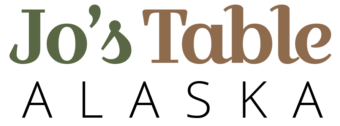This is third in the series of articles focusing on growing food in interior Alaska.
Beekeeping is a labor of love, it is expensive and very unpredictable in Alaska, especially with our changing summer weather patterns.
And it is not for me!
I am extremely cautious around bees and have been stung a few times with reactions that were unpleasant, painful and long lasting. One time I got stung on my nose and sported a Karl Malden look for weeks!
However, I am intrigued by the multitude of beekeepers in Interior Alaska who devote time, energy and resources in pursuing this activity with dedication and joy.
What is about beekeeping that inspires so many? Is it the honey? Is it that they love bees? Is it the challenge? Or is it that they just are passionate about this agricultural activity? I’m discovering that it is all of the above!
Beekeeping is a pretty intensive agricultural practice; it requires patience, care and devotion. There are no short cuts, there is no half hearted way to do this. It is definitely not for everyone. Many, like me just enjoy the end result, a beautiful jar of raw honey.
In Interior Alaska, Dawn Kogan has been teaching folks all about beekeeping. She teaches these classes twice a year and they are packed. Dawn has been teaching these classes around Fairbanks and Delta for about sixteen years and is joined by Jennifer Williamson as a business partner and Instructor. Together they have written a comprehensive book about beekeeping in Alaska. This book is provided to all registrants of the class.
In her very comprehensive class that spans two days, attendees learn answers to many questions:
- What is beekeeping?
- How much will it cost?
- How much honey can be harvested?
- What equipment is needed and where to get it?
- Preparing equipment for arrival of bees and insulation
- Feeding bees properly
- Identifying Queen
- Swarming and how to prevent it.
- Honey extraction
- Preparing for end of season/wintering over.
Dale Lupton is the Fairbanks Beekeeper and honeybee supplier. He can be contacted at (907) 978-1455
I plan to attend the class to understand what the buzz is all about and talk with new and seasoned beekeepers.
Here is what I have learned:
- Many beekeepers in Alaska don’t use a bee suit. However, that extra bit of protection certainly makes for a more enjoyable and safe experience for the beekeeper.
- Every spring, beekeepers will order honeybees from lower 48. The bees arrive around mid-April, while we still may have snow on the ground. The hives need to be insulated until it gets warmer.
- The bees will also need feeding as there is nothing blooming yet in April. The feeding is sugar water. The bees can go through 2–3-gallon jugs of sugar water.
- Once the willow, aspen, birch start to bloom, the bees then stop drinking the water and fly out to gather “food”. It’s the pollen that they are bringing back to the hives.
- Later in the spring and summer they feed on dandelions, lavender and any other flowers that are planted in the vicinity.
- Honeybees have a short nectar season in Alaska.
- Since bees’ drink water off the leaves and grass, and also collect nectar from nearby flowers and plants, its is imperative that those not be sprayed for pest control. Chemicals can severely harm the beekeeping operation.
- Overwintering bees in Interior Alaska is a difficult challenge. Many beekeepers euthanize or dispose their bees at the end of the season.
- Bees are transported from lower 48. While the trip is well managed, disasters can occur as was the case when they were left on the hot tarmac in Atlanta by the airlines and all bees died of heat.
- A four pound package of bees contains 13-15,000 bees with one queen. The queen’s sole purpose is to lay eggs, and they can lay up to 2,000 eggs per day.
- A healthy colony should have 40-60,000 bees by July and 80-100,000 bees by late fall. Without a queen, the colony will die off in less than eight weeks.
- An average harvest of honey in Alaska is 5-8 gallons per colony. It can be more or less depending on care, location, and weather.
- Raw honey is delicious, nutritional, and medicinal. It is a natural anti-septic and good for burns and wounds.
- Bees are also necessary for pollination of our trees, flowers, berries, and vegetables. Many of the crops would be greatly reduced with honeybee pollination.
- Alaska’s primary pollinators are, bumble bees, wasps, sweat bees, but imported honey bees also play a significant role in pollinating Alaska’s crops.
This is thousand faceted world. I’m humbled to learn what our beekeepers do to produce honey, help with pollination of crops and create a industry that is helping with ailments and allergies. This also encourages reduction of pesticides in our environment and food.
My interview with Tammy Randolph, a passionate North Pole Bee keeper is soon to be posted as a podcast on this site. She is relatively new to this venture, only eight years. Please listen to her story, her love of bees and her passion shines through.
